Transport of Amino Acids in Soy Sauce Desalination Process by Electrodialysis
Abstract
1. Introduction
2. Materials and Methods
2.1. Materials
2.2. Amino Acids in the Soy Sauce
2.3. ED Setup
2.4. Data Analysis
3. Results and Discussion
3.1. Desalination Degree and Amino Acid Loss Rate in the ED Process
3.1.1. Effect of Current Density on Desalination Degree
3.1.2. Effect of pH on Desalination Degree and Amino Acid Loss Rate
3.2. Transport Mechanism of the Amino Acids in the ED Process
3.2.1. Electro-Transport of Amino Acids in the ED Process
3.2.2. Adsorption Rate of Amino Acids in Soy Sauce by IEMs
3.3. Analysis of Pristine and Fouled IEMs
4. Conclusions
Supplementary Materials
Author Contributions
Funding
Institutional Review Board Statement
Informed Consent Statement
Data Availability Statement
Conflicts of Interest
References
- Ta, Y.W.; Mun, S.K.; Lee, F.S.; Lithnes, K.P.; Wu, T.Y.; Kan, M.S.; Siow, L.F.; Palni, L.K. Effect of temperature on moromi fermentation of soy sauce with intermittent aeration. Afr. J. Biotechnol. 2010, 9, 702–706. [Google Scholar] [CrossRef]
- Kim, J.-S.; Lee, Y.-S. A study of chemical characteristics of soy sauce and mixed soy sauce: Chemical characteristics of soy sauce. Eur. Food Res. Technol. 2007, 227, 933–944. [Google Scholar] [CrossRef]
- Sugawara, T.; Saraprug, D.; Sakamoto, K. Soy sauce increased the oxidative stress tolerance of nematode via p38 MAPK pathway. Biosci. Biotechnol. Biochem. 2019, 83, 709–716. [Google Scholar] [CrossRef]
- Zhang, Y.F.; Tao, W.Y. Flavor and taste compounds analysis in Chinese solid fermented soy sauce. Afr. J. Biotechnol. 2009, 8, 673–681. [Google Scholar]
- Devanthi, P.V.P.; Gkatzionis, K. Soy sauce fermentation: Microorganisms, aroma formation, and process modification. Food Res. Int. 2019, 120, 364–374. [Google Scholar] [CrossRef] [PubMed]
- Diez-Simon, C.; Eichelsheim, C.; Mumm, R.; Hall, R.D. Chemical and Sensory Characteristics of Soy Sauce: A Review. J. Agric. Food Chem. 2020, 68, 11612–11630. [Google Scholar] [CrossRef] [PubMed]
- Wang, Q.; Ying, T.; Jiang, T.; Yang, D.; Jahangir, M.M. Demineralization of soybean oligosaccharides extract from sweet slurry by conventional electrodialysis. J. Food Eng. 2009, 95, 410–415. [Google Scholar] [CrossRef]
- Fidaleo, M.; Moresi, M.; Cammaroto, A.; Ladrange, N.; Nardi, R. Soy sauce desalting by electrodialysis. J. Food Eng. 2012, 110, 175–181. [Google Scholar] [CrossRef]
- Readi, O.K.; Gironès, M.; Nijmeijer, D.C. Separation of complex mixtures of amino acids for biorefinery applications using electrodialysis. J. Membr. Sci. 2013, 429, 338–348. [Google Scholar] [CrossRef]
- Hidalgo, A.; Murcia, M. Membranes for Water and Wastewater Treatment. Membranes 2021, 11, 295. [Google Scholar] [CrossRef]
- Suwal, S.; Doyen, A.; Bazinet, L. Characterization of protein, peptide and amino acid fouling on ion-exchange and filtration membranes: Review of current and recently developed methods. J. Membr. Sci. 2015, 496, 267–283. [Google Scholar] [CrossRef]
- Stenina, I.; Yaroslavtsev, A. Ionic Mobility in Ion-Exchange Membranes. Membranes 2021, 11, 198. [Google Scholar] [CrossRef] [PubMed]
- Watanabe, M.; Tesaki, S.; Arai, S. Production of Low-salt Soy Sauce with Enriched Flavor by Freeze Concentration Using Bacterial Ice Nucleation Activity. Biosci. Biotechnol. Biochem. 1996, 60, 1519–1521. [Google Scholar] [CrossRef]
- Luo, J.; Ding, L.; Chen, X.; Wan, Y. Desalination of soy sauce by nanofiltration. Sep. Purif. Technol. 2009, 66, 429–437. [Google Scholar] [CrossRef]
- Zhang, Y.; Van der Bruggen, B.; Pinoy, L.; Meesschaert, B. Separation of nutrient ions and organic compounds from salts in RO concentrates by standard and monovalent selective ion-exchange membranes used in electrodialysis. J. Membr. Sci. 2009, 332, 104–112. [Google Scholar] [CrossRef]
- Nh, K.C.; Thu, K.; Shahzad, M.W.; Chun, W. Progress of adsorption cycle and its hybrids with conventional multi-effect desalination processes. IDA J. Desalination Water Reuse 2014, 6, 44–56. [Google Scholar]
- Moscetti, R.; Massantini, R.; Fidaleo, M. Application on-line NIR spectroscopy and other process analytical technology tools to the characterization of soy sauce desalting by electrodialysis. J. Food Eng. 2019, 263, 243–252. [Google Scholar] [CrossRef]
- Zhang, Y.; Pinoy, L.; Meesschaert, B.; Van Der Bruggen, B. Separation of small organic ions from salts by ion-exchange membrane in electrodialysis. Aiche J. 2011, 57, 2070–2078. [Google Scholar] [CrossRef]
- Wei, Q.; Wang, H.; Chen, Z.; Lv, Z.; Xie, Y.; Lu, F. Profiling of dynamic changes in the microbial community during the soy sauce fermentation process. Appl. Microbiol. Biotechnol. 2013, 97, 9111–9119. [Google Scholar] [CrossRef] [PubMed]
- Fidaleo, M.; Moresi, M.; Cammaroto, A.; Ladrange, N.; Nardi, R. Modelling of Soy Sauce Desalting by Electrodialysis. Food Bioprocess Technol. 2012, 6, 1681–1695. [Google Scholar] [CrossRef]
- Readi, O.K.; Mengers, H.; Wiratha, W.; Wessling, M.; Nijmeijer, K. On the isolation of single acidic amino acids for biorefinery applications using electrodialysis. J. Membr. Sci. 2011, 384, 166–175. [Google Scholar] [CrossRef]
- Sarapulova, V.; Pismenskaya, N.; Butylskii, D.; Titorova, V.; Wang, Y.; Xu, T.; Zhang, Y.; Nikonenko, V. Transport and Electrochemical Characteristics of CJMCED Homogeneous Cation Exchange Membranes in Sodium Chloride, Calcium Chloride, and Sodium Sulfate Solutions. Membranes 2020, 10, 165. [Google Scholar] [CrossRef]
- Syifaa, A.S.; Jinap, S.; Sanny, M.; Khatib, A. Chemical Profiling of Different Types of Soy Sauce and the Relationship with its Sensory Attributes. J. Food Qual. 2016, 39, 714–725. [Google Scholar] [CrossRef]
- Ganguly, A.; Pang, L.; Duong, V.-K.; Lee, A.; Schoniger, H.; Varady, E.; Dahanukar, A. A Molecular and Cellular Context-Dependent Role for Ir76b in Detection of Amino Acid Taste. Cell Rep. 2017, 18, 737–750. [Google Scholar] [CrossRef]
- Kremer, S.; Mojet, J.; Shimojo, R. Salt Reduction in Foods Using Naturally Brewed Soy Sauce. J. Food Sci. 2009, 74, S255–S262. [Google Scholar] [CrossRef]
- Lioe, H.N.; Wada, K.; Aoki, T.; Yasuda, M. Chemical and sensory characteristics of low molecular weight fractions obtained from three types of Japanese soy sauce (shoyu)—Koikuchi, tamari and shiro shoyu. Food Chem. 2007, 100, 1669–1677. [Google Scholar] [CrossRef]
- Lee, Y.S.; Homma, S. Desalting by Electrodialysis to Measure Iron Chelating Activity of Melanoidin in Soy Sauce and Fish Sauce. Nippon. Shokuhin Kogyo Gakkaishi 1991, 38, 556–562. [Google Scholar] [CrossRef]
- Chakrabarty, T.; Rajesh, A.M.; Jasti, A.; Thakur, A.K.; Singh, A.; Prakash, S.; Kulshrestha, V.; Shahi, V.K. Stable ion-exchange membranes for water desalination by electrodialysis. Desalination 2011, 282, 2–8. [Google Scholar] [CrossRef]
- Bunani, S.; Yoshizuka, K.; Nishihama, S.; Arda, M.; Kabay, N. Application of bipolar membrane electrodialysis (BMED) for simultaneous separation and recovery of boron and lithium from aqueous solutions. Desalination 2017, 424, 37–44. [Google Scholar] [CrossRef]
- Yu, Z. Determinations of Critical Limits in Ion Transport in Membrane Electrodialysis and Their Current vs. Voltage Characteristics for Ion Concentration Control in Pulp and Paper Mill Waste Stream. Ph.D. Thesis, University of Idaho, Moscow, ID, USA, 2002. [Google Scholar]
- Forgacs, C.; Ishibashi, N.; Leibovitz, J.; Sinkovic, J.; Spiegler, K. Polarization at ion-exchange membranes in electrodialysis. Desalination 1972, 10, 181–214. [Google Scholar] [CrossRef]
- Ali, M.B.S.; Mnif, A.; Hamrouni, B. Modelling of the limiting current density of an electrodialysis process by response surface methodology. Ionics 2018, 24, 617–628. [Google Scholar] [CrossRef]
- Chen, D.; Pomalaza-Ráez, C. A self-cleaning piezoelectric PVDF membrane system for filtration of kaolin suspension. Sep. Purif. Technol. 2019, 215, 612–618. [Google Scholar] [CrossRef]
- Sandoval-Lira, J.; Mondragon-Solorzano, G.; Lugo-Fuentes, L.I.; Barroso-Flores, J. Accurate Estimation of pK(b) Values for Amino Groups from Surface Electrostatic Potential (V-S,V-min) Calculations: The Isoelectric Points of Amino Acids as a Case Study. J. Chem. Inf. Modeling 2020, 60, 1445–1452. [Google Scholar] [CrossRef] [PubMed]
- Zhang, Y.F.; Liu, L.; Du, J.; Fu, R.Q.; Van der Bruggen, B.; Zhang, Y. Fracsis: Ion fractionation and metathesis by a NF-ED integrated system to improve water recovery. J. Membr. Sci. 2017, 523, 385–393. [Google Scholar] [CrossRef]
- Ng, K.C.; Burhan, M.; Chen, Q.; Ybyraiykul, D.; Akhtar, F.H.; Kumja, M.; Field, R.W.; Shahzad, M.W. A thermodynamic platform for evaluating the energy efficiency of combined power generation and desalination plants. Npj Clean Water 2021, 4, 25. [Google Scholar] [CrossRef]
- Bukhovets, A.; Savel’Eva, A.; Eliseeva, T. Separation of amino acids mixtures containing tyrosine in electromembrane system. Desalination 2009, 241, 68–74. [Google Scholar] [CrossRef]
- Tanaka, N.; Nagase, M.; Higa, M. Organic fouling behavior of commercially available hydrocarbon-based anion-exchange membranes by various organic-fouling substances. Desalination 2012, 296, 81–86. [Google Scholar] [CrossRef]
- Berkessa, Y.W.; Lang, Q.; Yan, B.; Kuang, S.; Mao, D.; Shu, L.; Zhang, Y. Anion exchange membrane organic fouling and mitigation in salt valorization process from high salinity textile wastewater by bipolar membrane electrodialysis. Desalination 2019, 465, 94–103. [Google Scholar] [CrossRef]
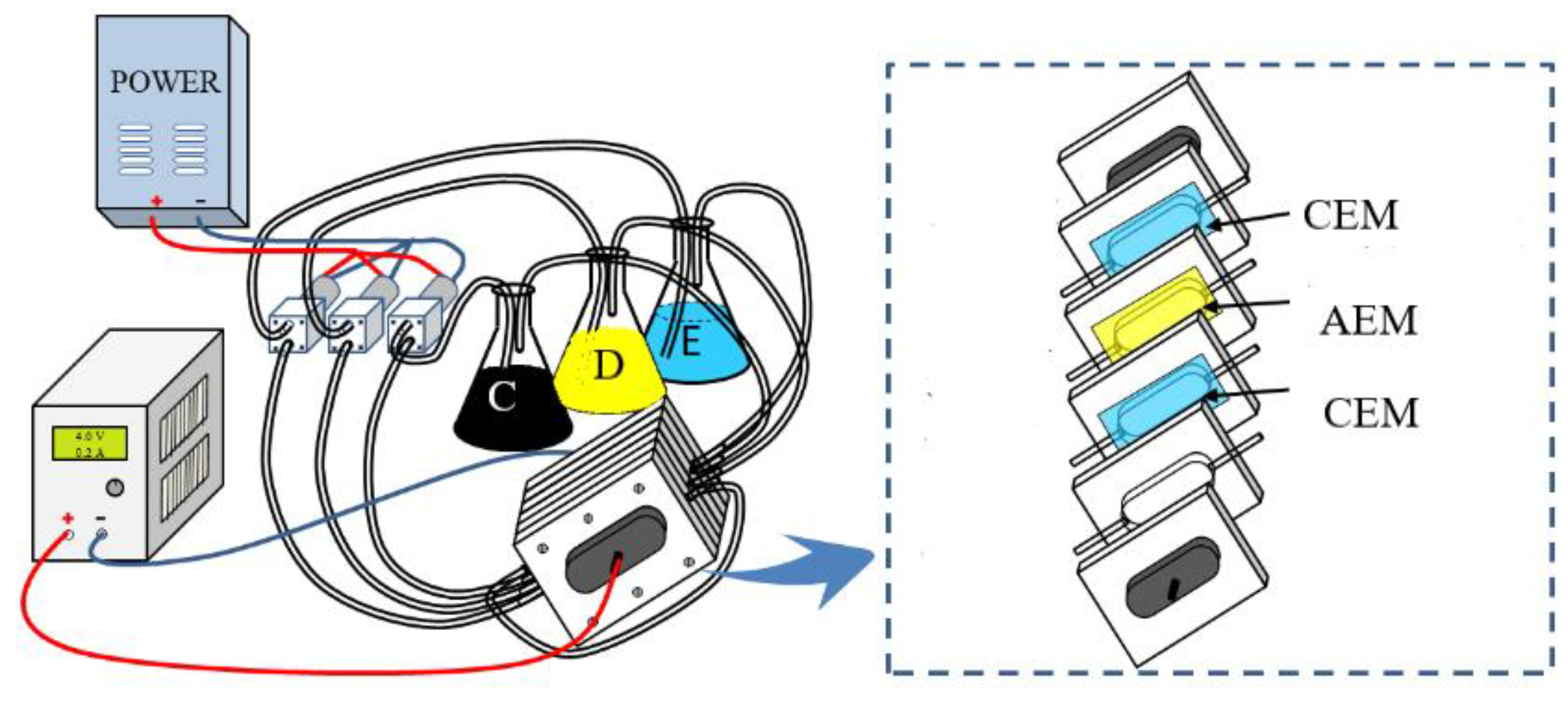
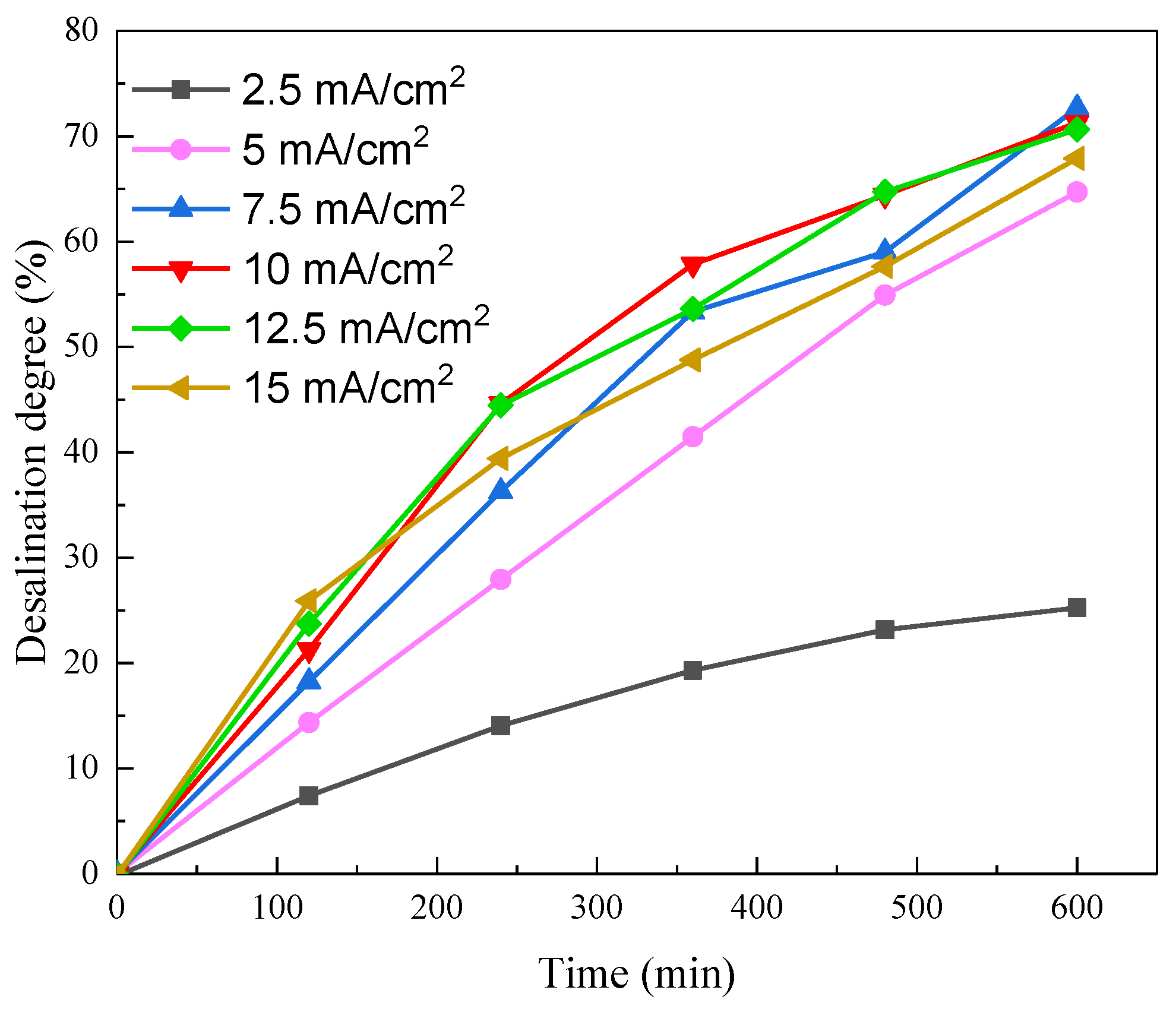
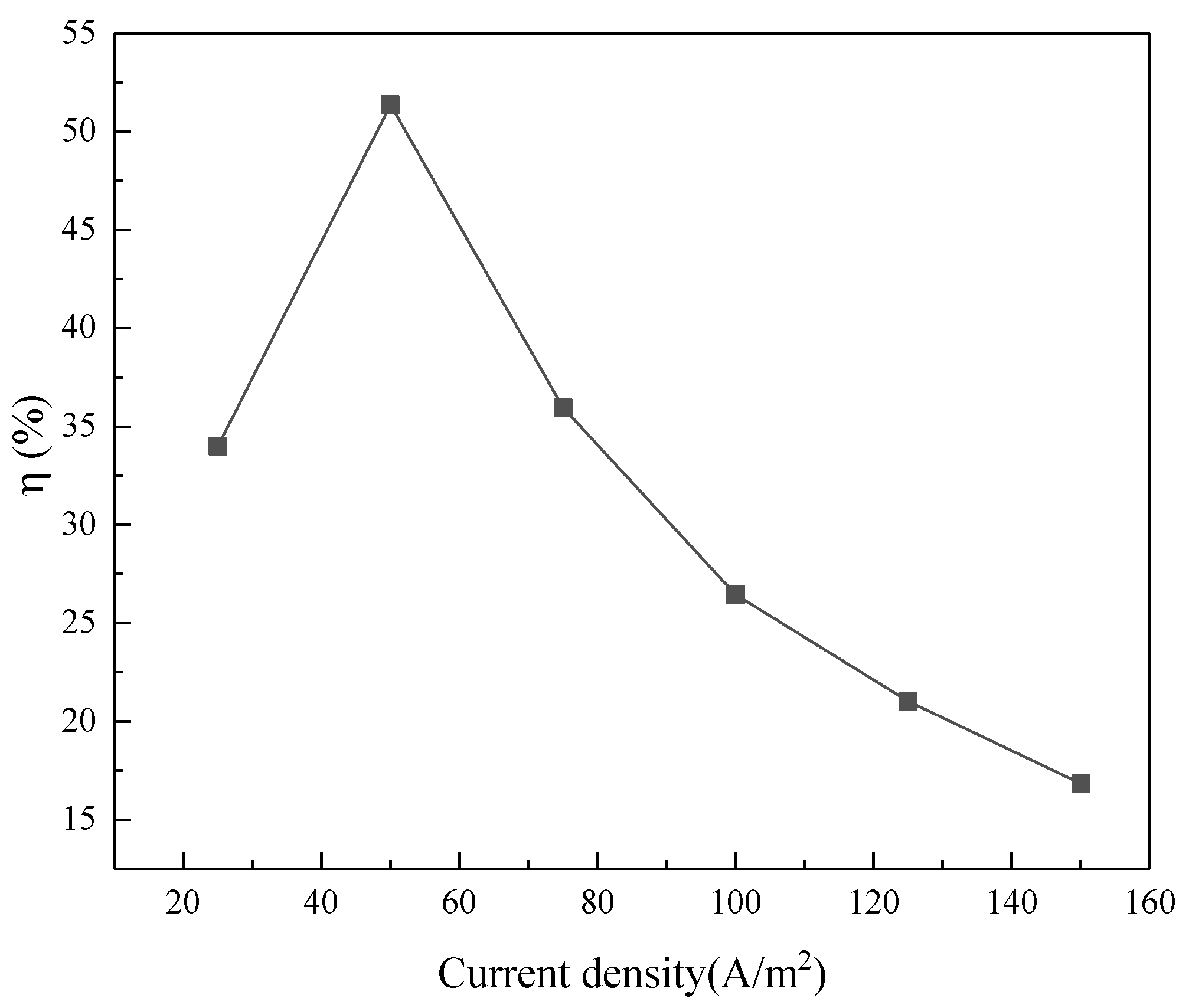
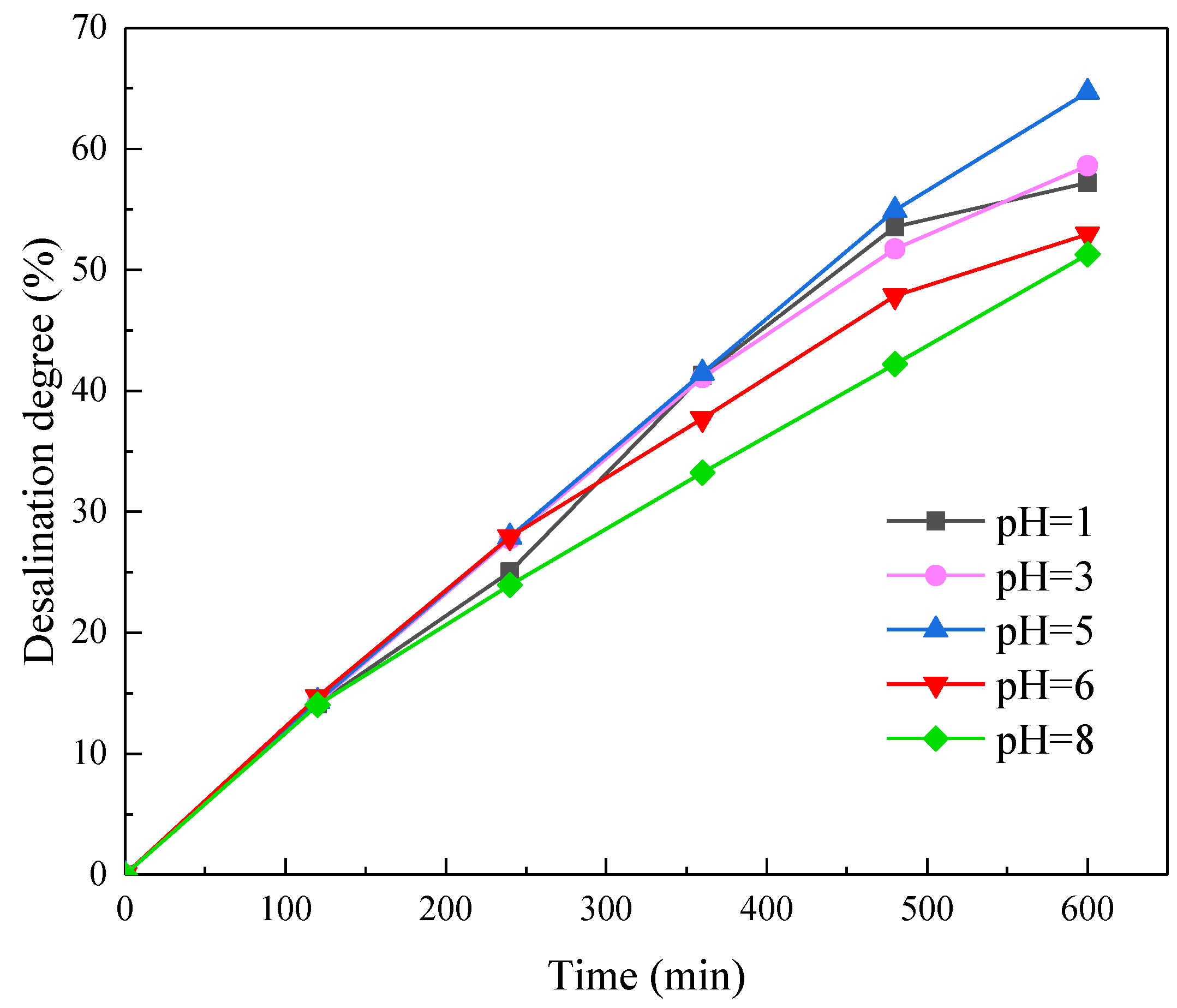
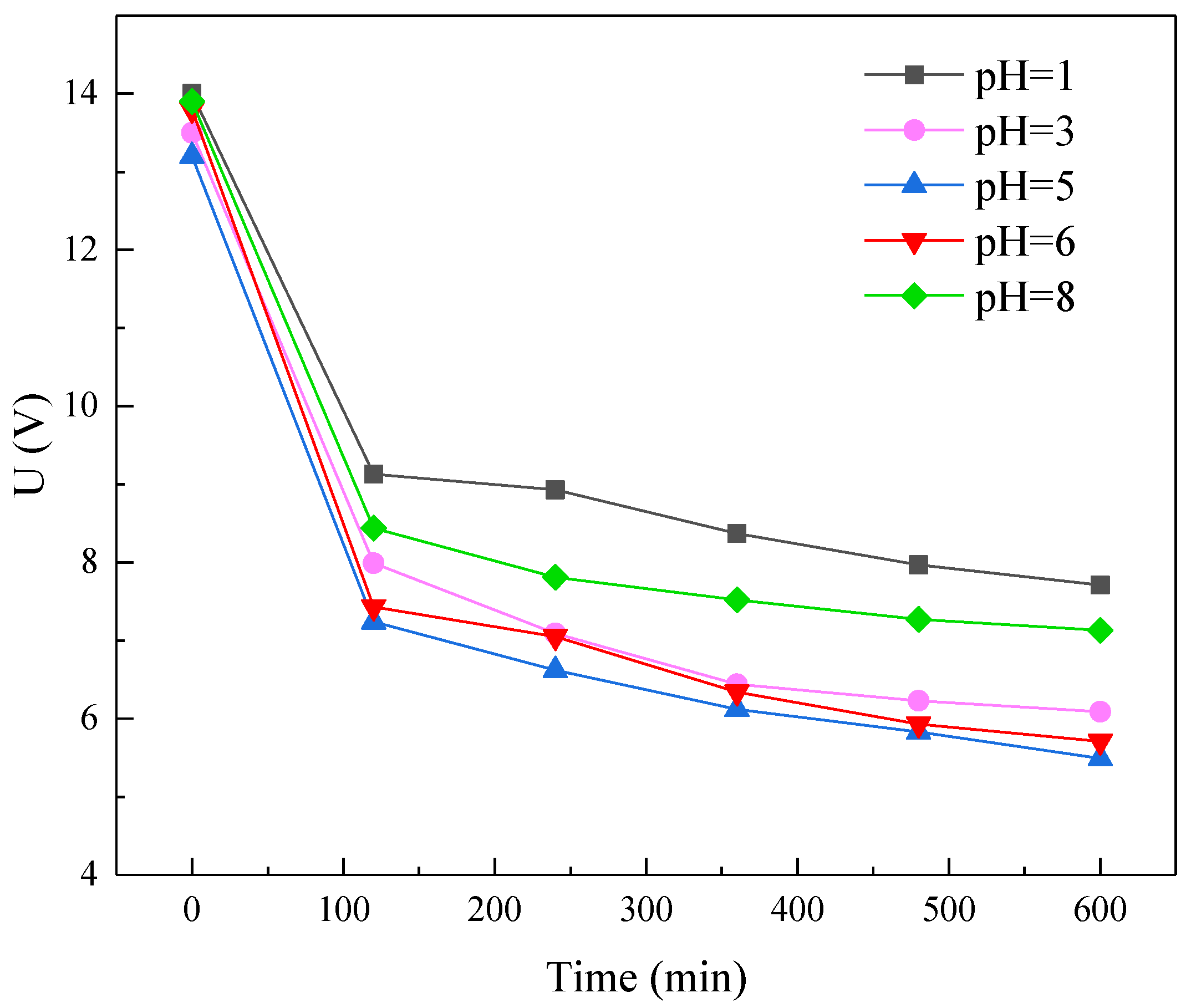
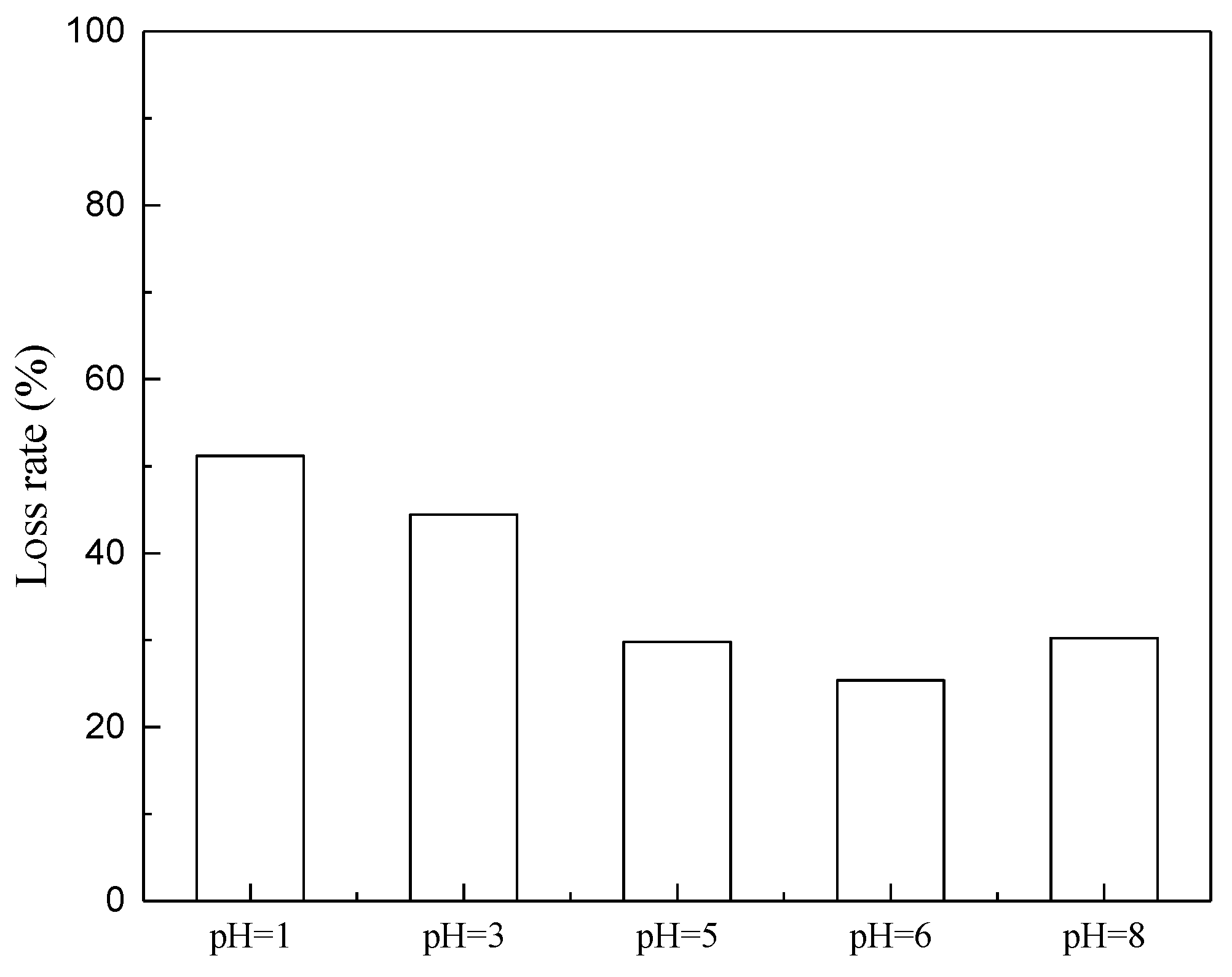
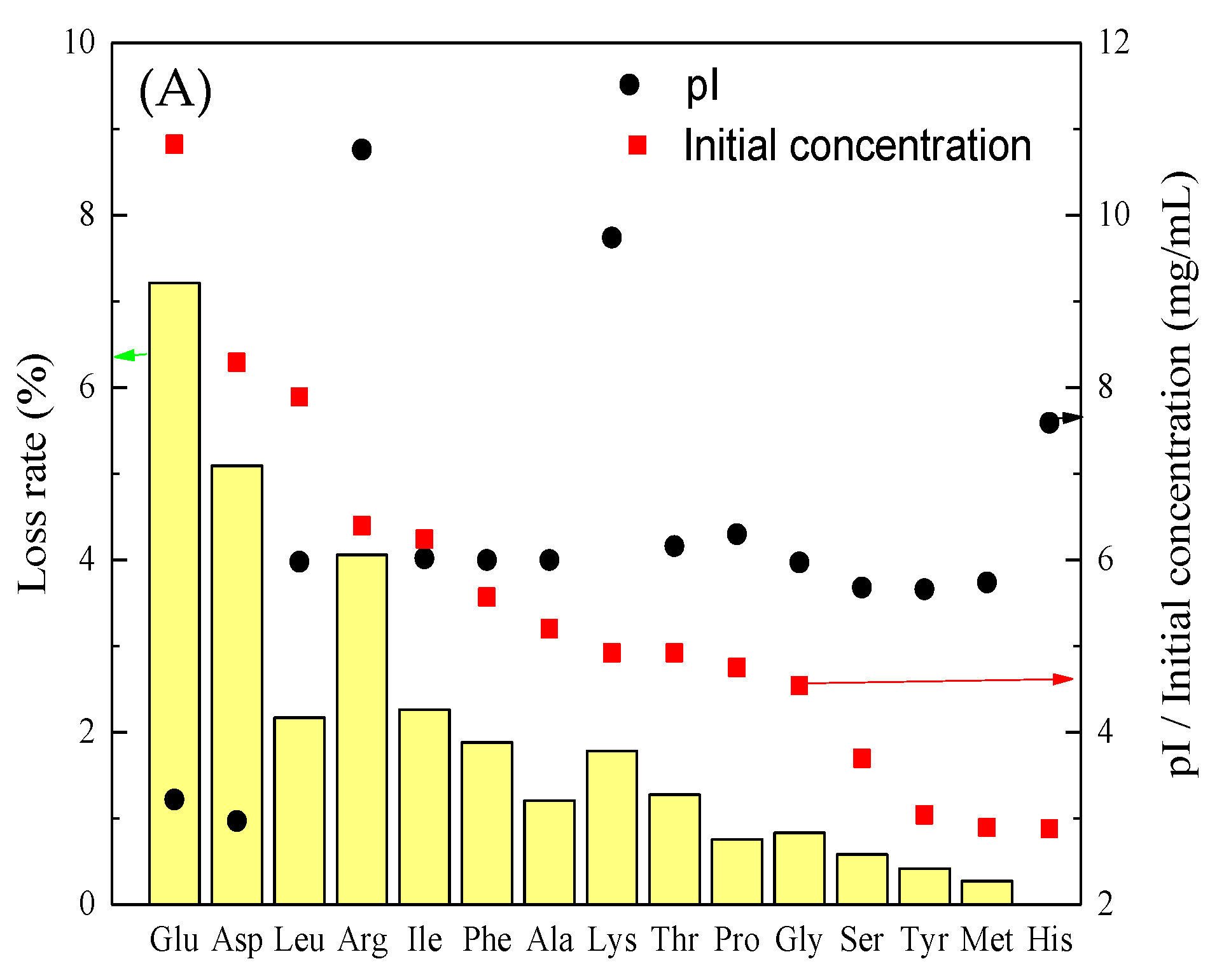
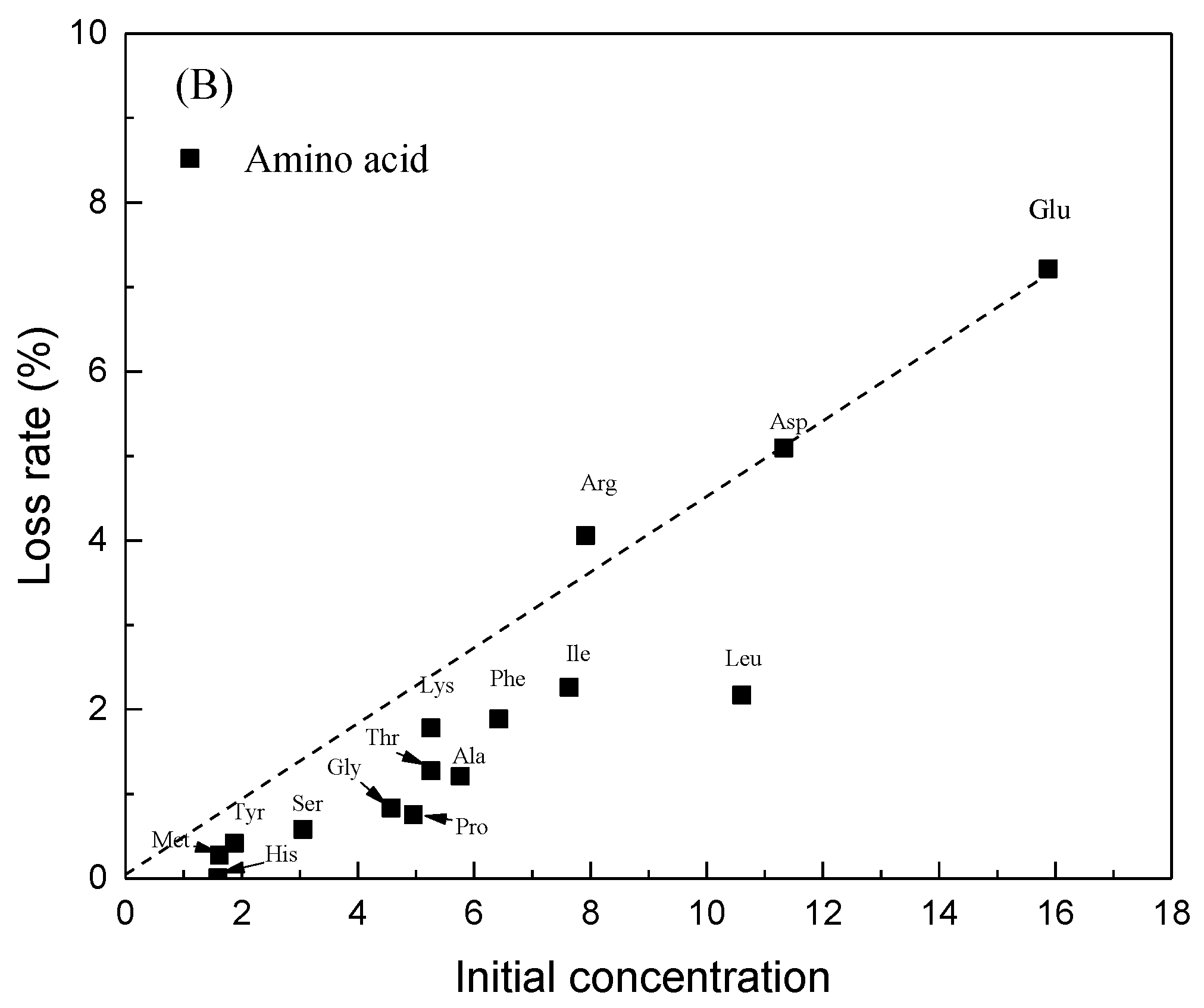
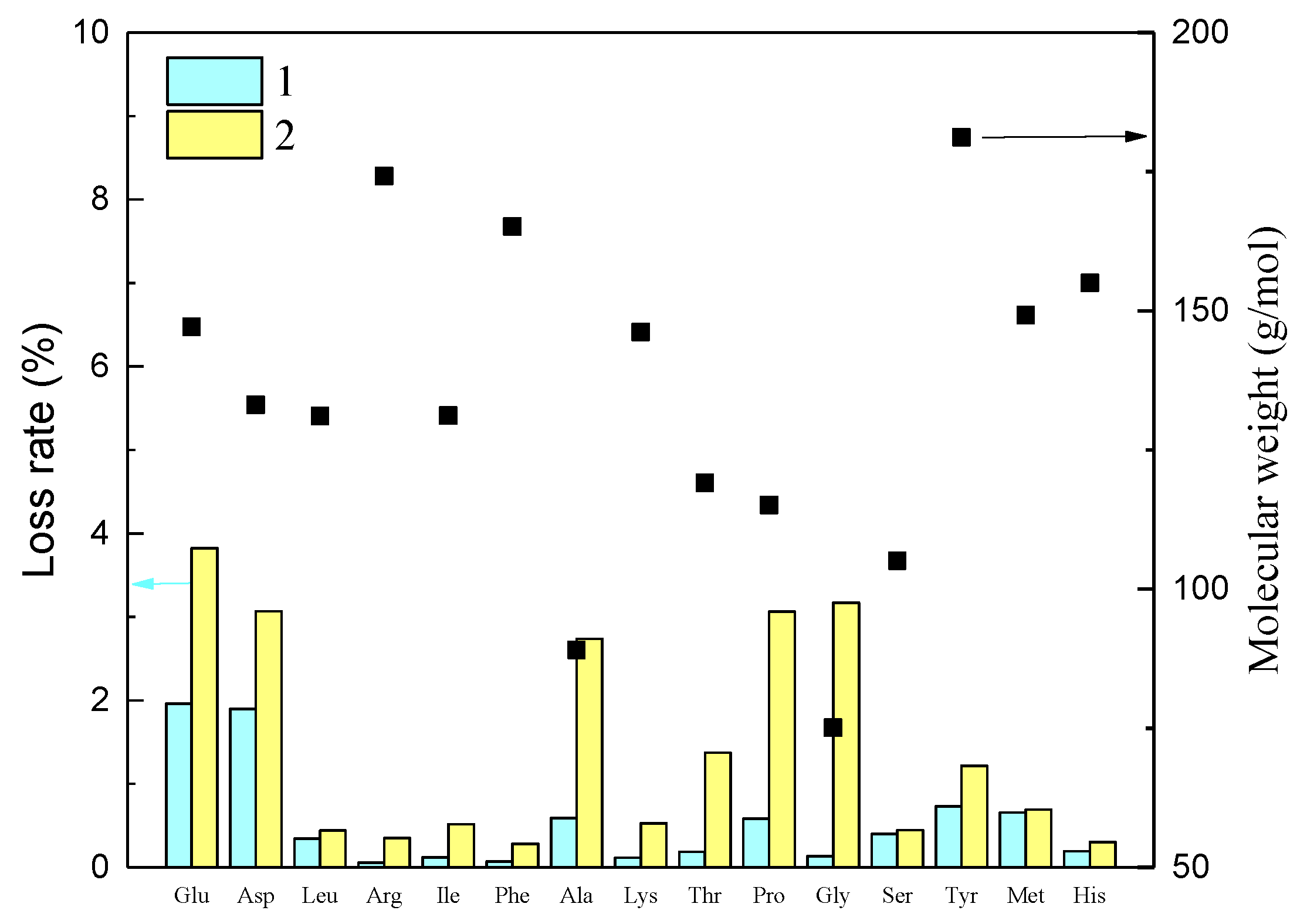
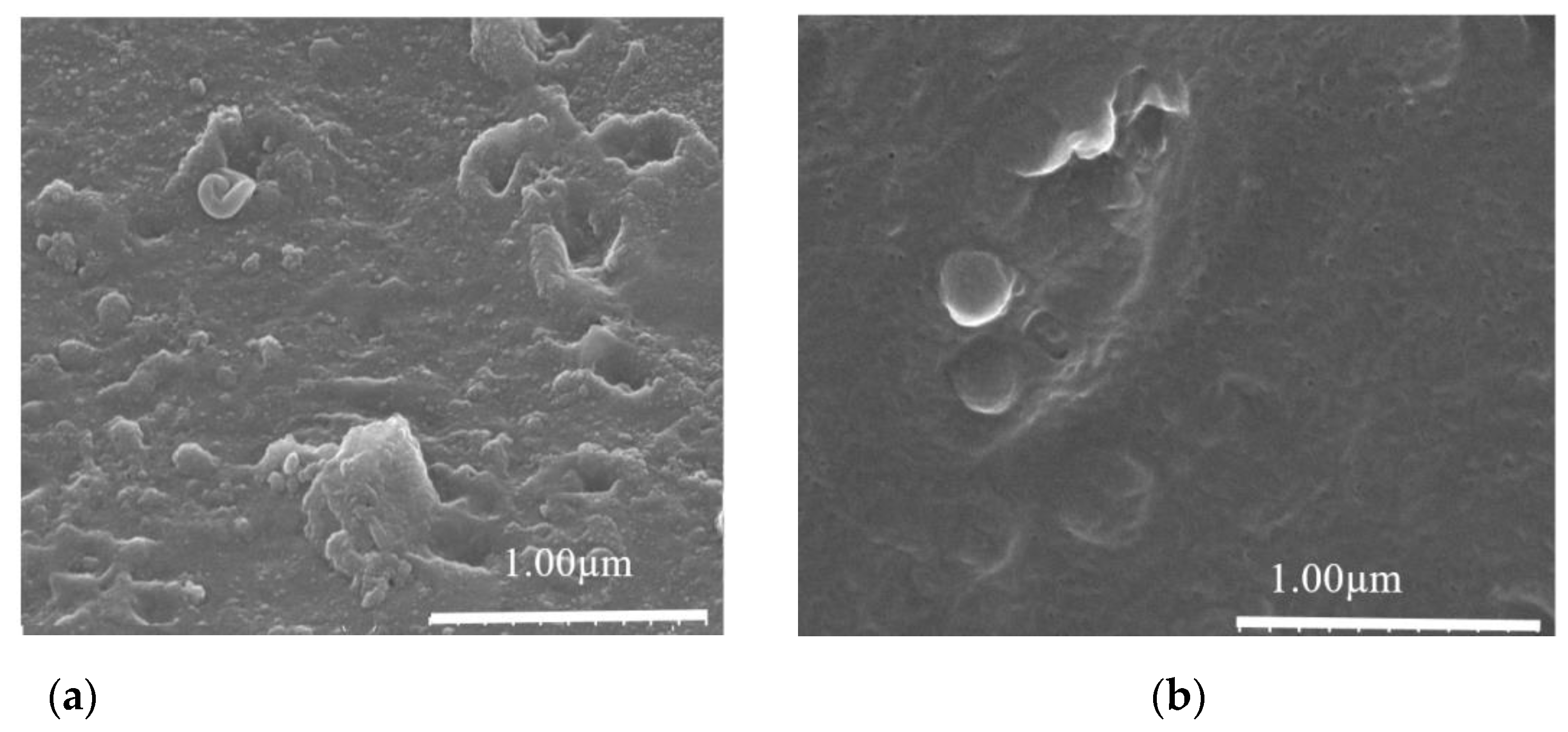
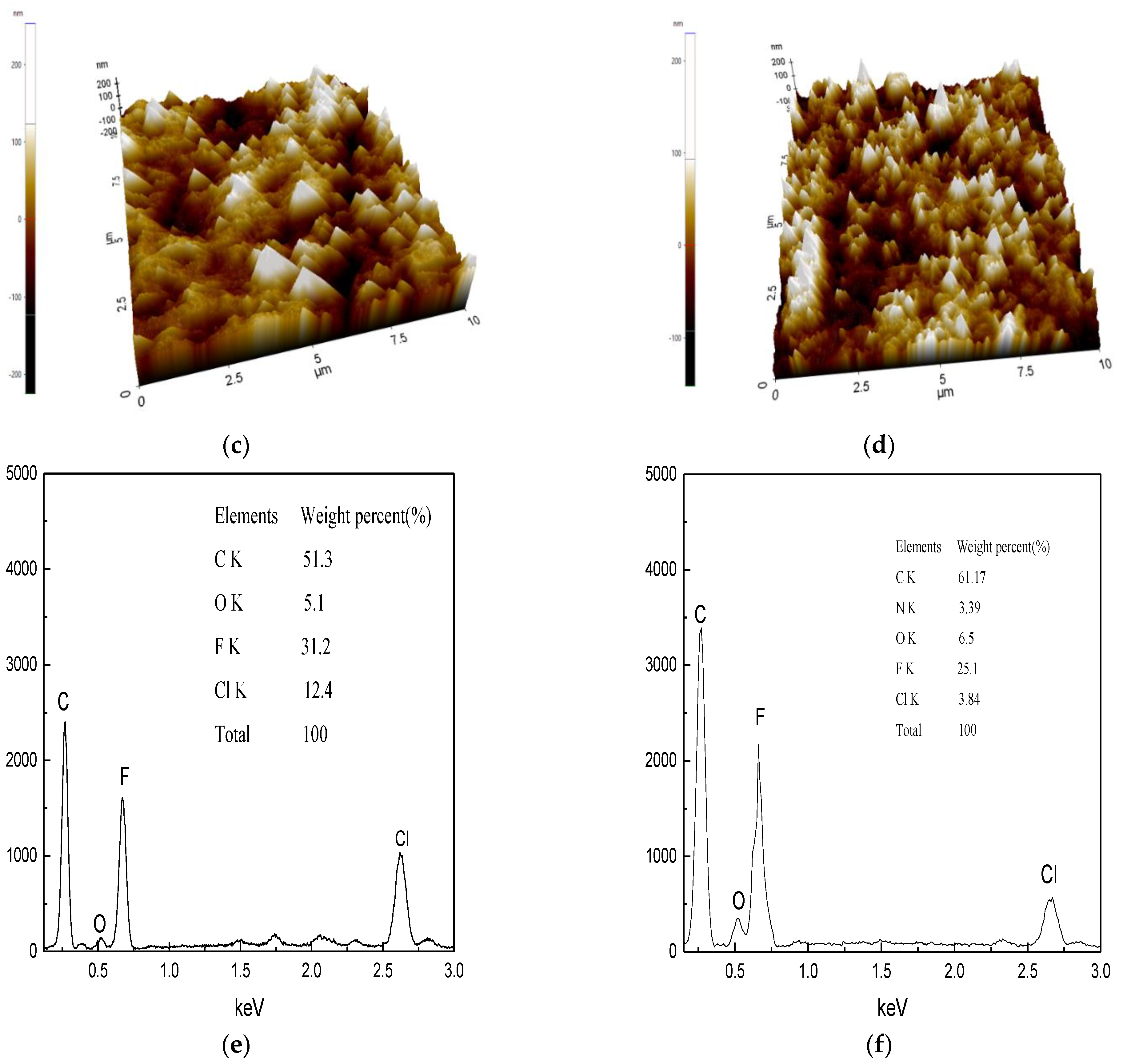
| Type | Resistance (Ω/Cm2) | Water Content (%) | Ion Exchange Capacity(Mmol/G) | Selective Transmittance | FunctionalGroup | Thickness(Mm) |
|---|---|---|---|---|---|---|
| CJMC | 2.5–3.5 | 40–50 | 0.8–1.0 | >0.93 | –SO3Na | 0.18–0.21 |
| CJMA | 3.5–4.5 | 15–20 | 0.5–0.6 | >0.93 | –NR4Cl | 0.14–0.16 |
| Amino Acids | Concentration (mg/mL) | Isoelectric Point (pI) | Molecular Weight (Da) | Taste |
|---|---|---|---|---|
| Glutamate (Glu) | 10.465 | 3.22 | 147.13 | Umami |
| Aspartate (Asp) | 7.465 | 2.97 | 133.09 | Umami |
| Leucine (Leu) | 6.989 | 5.98 | 131.1 | Bitter |
| Arginine (Arg) | 5.216 | 10.76 | 174.2 | Bitter |
| Isoleucine (Ile) | 5.032 | 6.02 | 131.17 | Bitter |
| Phenylalanine (Phe) | 4.234 | 5.49 | 165.19 | Sweet |
| Alanine (Ala) | 3.798 | 6 | 89.09 | Sweet |
| Lysine (Lys) | 3.465 | 9.74 | 146.19 | Sweet |
| Threonine (Thr) | 3.465 | 6.16 | 119.12 | Sweet |
| Proline (Pro) | 3.265 | 6.3 | 115.13 | Sweet |
| Glycine (Gly) | 3.013 | 5.97 | 75.07 | Sweet |
| Serine (Ser) | 2.013 | 5.68 | 105.09 | Sweet |
| Tyrosine (Tyr) | 1.234 | 5.64 | 181.19 | Bitter |
| Methionine (Met) | 1.065 | 5.74 | 149.21 | Bitter |
| Histidine (His) | 1.046 | 7.59 | 155 | Bitter |
| Amino Acids | Concentration (mg/mL) | Molar Fraction of Total Amino Acids (%) | Isoelectric Point (pI) |
|---|---|---|---|
| Glutamate (Glu) | 10.465 | 14.88 | 3.22 |
| Aspartate (Asp) | 7.465 | 11.73 | 2.97 |
| Leucine (Leu) | 6.989 | 11.15 | 5.98 |
| Arginine (Arg) | 5.216 | 6.26 | 10.76 |
| Isoleucine (Ile) | 5.032 | 8.02 | 6.02 |
| Phenylalanine (Phe) | 4.234 | 5.36 | 5.49 |
| Alanine (Ala) | 3.798 | 8.91 | 6 |
| Lysine (Lys) | 3.465 | 4.96 | 9.74 |
| Threonine (Thr) | 3.465 | 6.09 | 6.16 |
| Proline (Pro) | 3.265 | 5.93 | 6.3 |
| Glycine (Gly) | 3.013 | 8.4 | 5.97 |
| Serine (Ser) | 2.013 | 4 | 5.68 |
| Tyrosine (Tyr) | 1.234 | 1.4 | 5.64 |
| Methionine (Met) | 1.065 | 1.49 | 5.74 |
| Histidine (His) | 1.046 | 1.42 | 7.59 |
| The total amino acid | 61.765 | 100 | 5.71 * |
Publisher’s Note: MDPI stays neutral with regard to jurisdictional claims in published maps and institutional affiliations. |
© 2021 by the authors. Licensee MDPI, Basel, Switzerland. This article is an open access article distributed under the terms and conditions of the Creative Commons Attribution (CC BY) license (https://creativecommons.org/licenses/by/4.0/).
Share and Cite
Wang, M.; Kuang, S.; Wang, X.; Kang, D.; Mao, D.; Qian, G.; Cai, X.; Tan, M.; Liu, F.; Zhang, Y. Transport of Amino Acids in Soy Sauce Desalination Process by Electrodialysis. Membranes 2021, 11, 408. https://doi.org/10.3390/membranes11060408
Wang M, Kuang S, Wang X, Kang D, Mao D, Qian G, Cai X, Tan M, Liu F, Zhang Y. Transport of Amino Acids in Soy Sauce Desalination Process by Electrodialysis. Membranes. 2021; 11(6):408. https://doi.org/10.3390/membranes11060408
Chicago/Turabian StyleWang, Man, Shaoping Kuang, Xitong Wang, Daihao Kang, Debin Mao, Guanlan Qian, Xiaodan Cai, Ming Tan, Fei Liu, and Yang Zhang. 2021. "Transport of Amino Acids in Soy Sauce Desalination Process by Electrodialysis" Membranes 11, no. 6: 408. https://doi.org/10.3390/membranes11060408
APA StyleWang, M., Kuang, S., Wang, X., Kang, D., Mao, D., Qian, G., Cai, X., Tan, M., Liu, F., & Zhang, Y. (2021). Transport of Amino Acids in Soy Sauce Desalination Process by Electrodialysis. Membranes, 11(6), 408. https://doi.org/10.3390/membranes11060408







